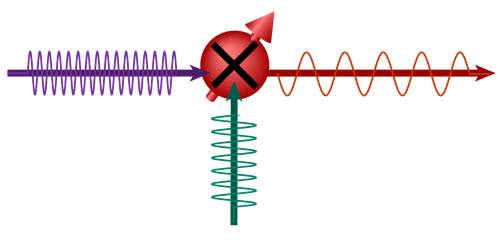More Versatile Quantum Sensors
Quantum sensors use quantum phenomena, such as coherence and entanglement, to measure signals, such as electric and magnetic fields. These sensors offer high sensitivity and spatial resolution but can only detect fields of specific frequencies. Guoqing Wang at the Massachusetts Institute of Technology and his colleagues have now demonstrated a method that allows existing quantum sensors to measure arbitrary-frequency fields [1]. The approach extends the capabilities of these devices and could find applications beyond quantum sensing.
One strategy to enable a quantum sensor to measure an arbitrary-frequency field is to convert the field’s frequency to one that is accessible to the sensor. Such a conversion can be achieved by combining the signal field with a bias field using an electrical circuit known as a frequency mixer. But this circuit can reduce the sensor’s spatial resolution. Wang and his colleagues avoided this problem by instead using a qubit in the sensor to perform a quantum analog of frequency mixing. When a bias field is applied to the qubit, the qubit converts the signal field’s frequency to an accessible frequency. The signal field can then be analyzed using well-established sensing techniques.
The new approach can also distinguish the transverse and longitudinal components of a signal field, something the team demonstrated using a quantum sensor based on solid-state spins and a 150-MHz magnetic field. The researchers say that their method might also have uses in other contexts—from quantum computing to quantum communication.
–Ryan Wilkinson
Ryan Wilkinson is a Corresponding Editor for Physics Magazine based in Durham, UK.
References
- G. Wang et al., “Sensing of arbitrary-frequency fields using a quantum mixer,” Phys. Rev. X 12, 021061 (2022).




